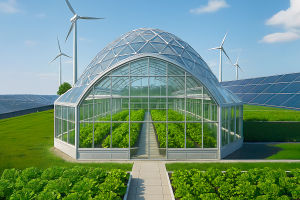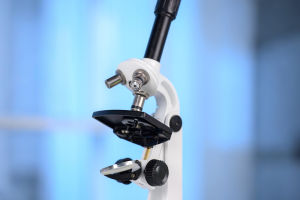Hey Lykkers, Picture this: a swarm of drones buzzing across a barren landscape, dropping seed pods like tiny parachutes. Fast forward a few years, and that lifeless patch of land has transformed into a thriving forest. Sounds like science fiction?
It’s not—it’s happening right now, and it might just be one of the smartest weapons we have in the fight against climate change. Let’s chat about how drones are reshaping reforestation and why this technology is a game-changer for our planet.
Why Do We Need Drone Reforestation?
Every year, the world loses around 10 million hectares of forest—an area the size of Iceland. Forests are cleared for farming, urban expansion, and logging, while wildfires, pests, and climate change add to the damage. Reforestation is urgent, but traditional methods—where people plant one seedling at a time—are painfully slow and labor-intensive.
On average, a skilled human tree planter can put about 800–1,000 trees in the ground per day. Impressive, but not nearly enough to balance the scale of destruction. Enter drones: machines capable of planting tens of thousands of trees per day, covering tough terrain, and doing it with pinpoint precision.
How Do These Tree-Planting Drones Work?
The process usually unfolds in two stages:
1. Mapping the Terrain
Before planting begins, drones equipped with cameras and sensors fly over the target area. They build 3D maps, analyzing soil type, moisture levels, and sunlight exposure. This helps decide which species should go where and maximizes survival chances.
2. Seed Dropping
Once the land is mapped, drones are loaded with seed pods. These aren’t ordinary seeds—they’re packed into biodegradable capsules containing nutrients, fertilizer, and protective coatings. When dropped, the pods break open and give seeds a fighting chance against pests and harsh conditions.
Companies like Flash Forest in Canada claim their drones can plant 40,000 trees per day, while BioCarbon Engineering in the UK reported similar capabilities. Compare that to human planting rates, and you see why this is revolutionary.
Why It’s Such a Big Deal
Unmatched Speed – Months of manual work can be done in just hours.
Hard-to-Reach Areas – Drones can access remote, mountainous, or disaster-hit regions where humans can’t safely go.
Lower Costs – Scaling up is cheaper, making reforestation more feasible for governments and NGOs.
Data and Monitoring – Drones can return later to check seedling growth, adjusting strategies for better results.
Real-World Examples
This isn’t just a futuristic concept—it’s already in action:
Myanmar: Drones helped replant mangrove forests, which are vital natural barriers against coastal storms.
Australia: After devastating bushfires, drones were deployed to scatter native seeds quickly across burned landscapes.
Canada: Flash Forest aims to plant one billion trees by 2028, using drones to target areas impacted by logging and wildfires.
In many of these cases, drone-planted trees showed survival rates comparable to hand-planted ones, especially when combined with follow-up monitoring.
Challenges Still Ahead
Of course, no technology is perfect. Some issues include:
Seed Survival Rates – Not all seeds sprout; harsh weather, pests, or poor soil can reduce success.
Species Variety – Certain trees, especially hardwoods, may require careful manual planting.
Cost and Training – Drone fleets and software are pricey, and skilled operators are needed.
Ecosystem Complexity – Forests aren’t just trees—they’re ecosystems. Planting must consider biodiversity, not just quantity.
The Future of Drone Forestry
The next step is combining drone planting with artificial intelligence. Imagine AI-powered drones that not only plant but also monitor growth for years, identify sick trees, and even deliver water or nutrients where needed. Some research teams are experimenting with drones that can fire seed pods directly into the soil, increasing germination rates.
This could be paired with human efforts, creating hybrid teams: people handling delicate species while drones cover vast areas quickly. If scaled properly, drone reforestation could help offset carbon emissions, restore wildlife habitats, and make a serious dent in climate change.
Final Thought
The idea of drones flying over hillsides, planting entire forests in just a few hours, is both futuristic and deeply hopeful. While challenges remain, the potential is huge. Instead of replacing humans, these drones are working alongside them—helping us repair the damage faster than ever before.
So, Lykkers, the next time you hear a buzzing overhead, don’t just assume it’s delivering takeout. It might be quietly planting the seeds of our future. And honestly, that’s something worth rooting for.


